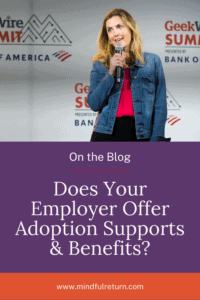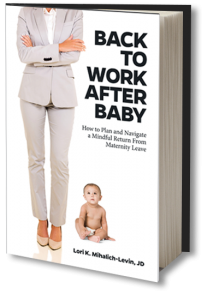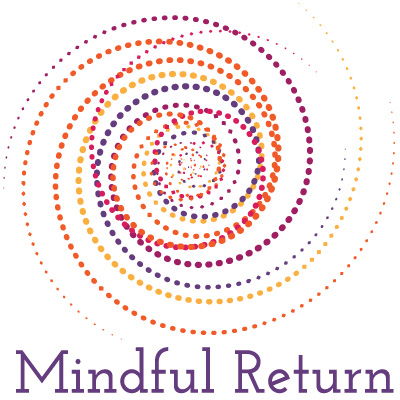 Does your employer offer support and benefits specifically for adoption? At Mindful Return, we are firmly committed to inclusion and representation of all working parent voices. We believe wholeheartedly in supporting working parents on their work-and-life journeys no matter how they came to parenthood.
Does your employer offer support and benefits specifically for adoption? At Mindful Return, we are firmly committed to inclusion and representation of all working parent voices. We believe wholeheartedly in supporting working parents on their work-and-life journeys no matter how they came to parenthood.
And while we’ve featured posts here on the Mindful Return blog that, for example, have included the stories of single moms by choice, those on a surrogacy journey, moms who have experienced loss, LGBTQ+ parents, twin parents, and single working moms, we haven’t specifically focused on working parents who have adopted a child or children.
Today, I am delighted to welcome Erin Quick to the Mindful Return blog. She is both a two-time adoptive mama and an advocate. Erin is here to encourage us to take a look at what the organizations we work for can do to better support adoptive parents in the workplace. It turns out this issue affects way more of us than we think. Welcome, Erin!
************************************
Family-building benefits like adoption are getting more airtime recently, and with good reason. Every year, millions of U.S. workers pursue adoption to build their families, or as part of an unintended pregnancy.
As a two-time adoptive mom, I have observed first-hand the massive opportunity to modernize the process in general, and specifically when it comes to employer support. Fewer than half of companies offer benefits that address adoption as part of family planning. For those that do, they are often a “last stop” on a fertility journey.
And while adoption and fertility treatment may seem like similar paths to family-building, they require very different approaches and consideration. This is particularly true for those who are pursing adoption-first to grow their families.
Adoption Applies to More Situations Than You May Think
The primary approach to building a family for employees who aren’t trying to conceive, is adoption. This is a path being pursued by 1 in 6 families, including the 77% of LGBT+ families using adoption or assisted reproduction. Consider the following scenarios:
- Stepparents: when one wants to legally adopt step children;
- Second parents: when LGBT+ families pursue fertility treatments, one parent needs to legally adopt;
- Surrogacy: when parents need to legally adopt their child once born;
- Family member: those adopting a child after the loss of a family member;
- Adopting families: those pursuing adoption as the primary path to parenting;
- Expectant women & birth mothers: those facing unplanned pregnancy and exploring options.
The Misstep with Only Implementing Infertility Benefits
In my experience, adoption came into our purview after I was diagnosed with unexplained infertility. And while this is a common experience, it’s not the only path. The large family-building benefit companies treat conception as the goal. Adoption is discussed only when fertility-first methods are unsuccessful.
In those benefit companies, the adoption benefit typically entails a referral to a traditional agency. A referral out means that even with employer-sponsored financial assistance, adoption remains out of reach for many employees.
The Costs of Adoption Require Unique Support
One of the biggest challenges of adoption is the financial burden the process places on families, with average fees ranging from $50,000 – $60,000. With employees spending an average of 57 days researching the process and waiting 18-24 months for placement, time is a close second to the burden of cost. (And yes, they’re doing this research during work hours.)
More robust options can help employees use any financial assistance in the wisest, most efficient way possible. Adoption benefits and supports can save the employer and employee thousands of dollars, increasing productivity and potentially years of waiting.
Becoming More Adoption Inclusive
There are several ways employers can begin to offer more adoption-inclusive options or resources to their employees:
- Add adoption-specific organizations to the list of resources you recommend. This can greatly cut the costs and time associated with the process, and focus on equitable, healthy adoption processes and support.
- Consider adding adoption education (in addition to, or in lieu of financial assistance). Organizations that invest in adoption education often spend less in financial assistance
Introduce adoption-related resources to your ERG leads, so that they can share current, objective, inclusive resources, and materials with employees.
I am more than open to sharing additional resources, answering questions, or sharing more of my personal experience for anyone who would like to connect directly. You can reach me at erin@pairtreefamily.com.
 Erin Quick is a modern adoption advocate and the CEO and Founder of PairTree and its Unfertility BenefitsTM plan. As a two-time adoptive mother, Erin sees massive opportunities to modernize adoption. Although her journey to motherhood was successful, it came with setbacks. After being diagnosed with unexplained infertility, Erin and her husband turned to adoption. Instead of working with an agency, Erin self-navigated the adoption process. While technology streamlined their process, supportive emotional and educational resources were missing. To make the process more transparent, equitable and accessible for expecting mothers and adopting families, Erin harnessed her entrepreneurial roots and 20 years of global brand marketing experience to found PairTree in 2020. Today, PairTree has worked with over 6,000 families and 700 expectant moms, and Erin has continued to build a dedicated team to pave the way for a human-centered, accessible adoption process.
Erin Quick is a modern adoption advocate and the CEO and Founder of PairTree and its Unfertility BenefitsTM plan. As a two-time adoptive mother, Erin sees massive opportunities to modernize adoption. Although her journey to motherhood was successful, it came with setbacks. After being diagnosed with unexplained infertility, Erin and her husband turned to adoption. Instead of working with an agency, Erin self-navigated the adoption process. While technology streamlined their process, supportive emotional and educational resources were missing. To make the process more transparent, equitable and accessible for expecting mothers and adopting families, Erin harnessed her entrepreneurial roots and 20 years of global brand marketing experience to found PairTree in 2020. Today, PairTree has worked with over 6,000 families and 700 expectant moms, and Erin has continued to build a dedicated team to pave the way for a human-centered, accessible adoption process.
Want more practical tips on working parenthood? Check out my book, Back to Work After Baby: How to Plan and Navigate a Mindful Return from Maternity Leave



